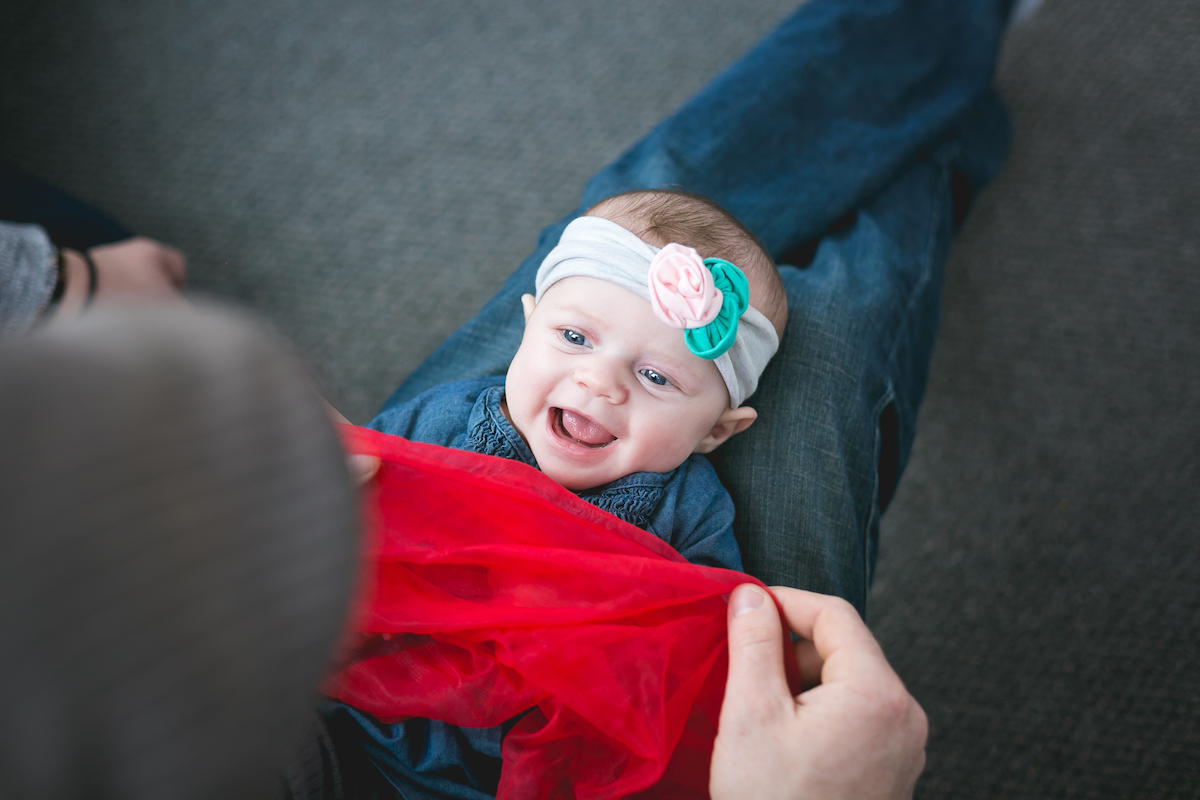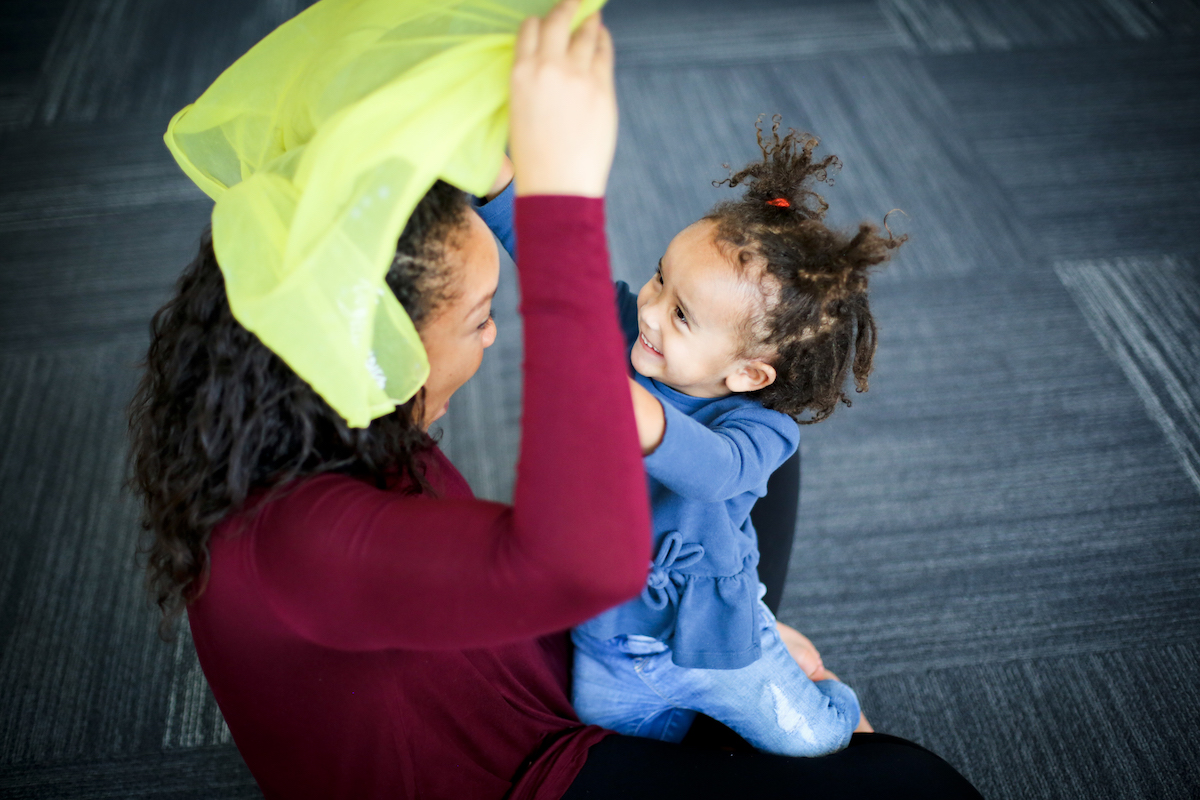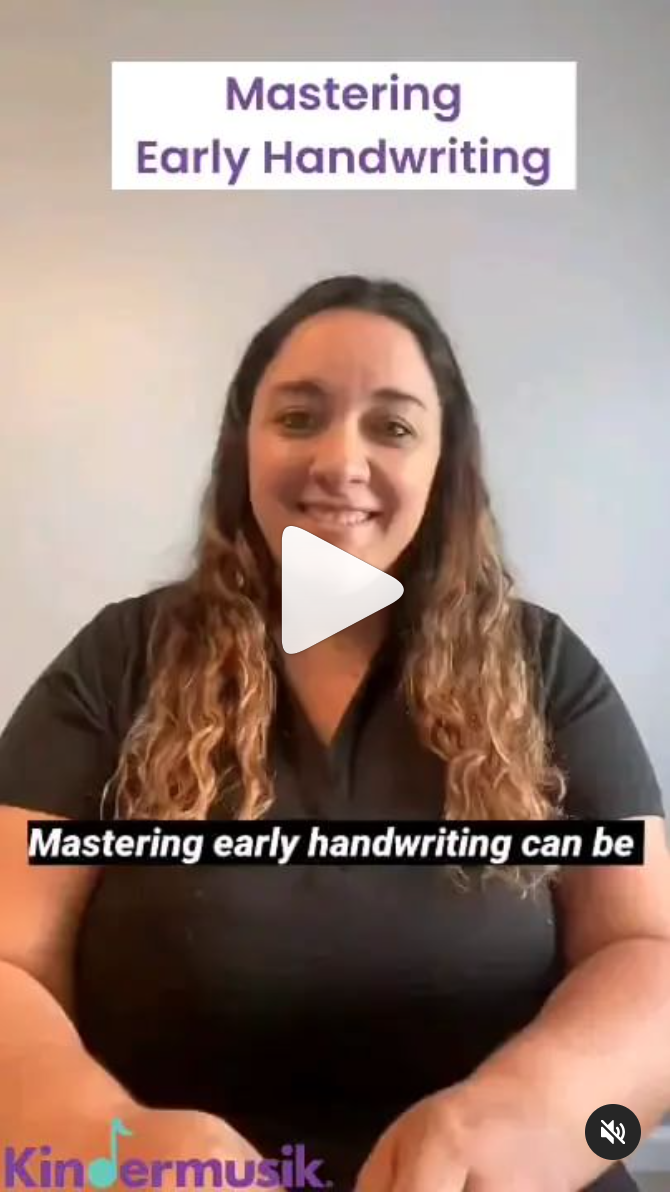Swish. Twist. Float. Twirl. Bounce. Wave. Scrunch. Toss. Peekaboo…there are a thousand and one ways to promote early childhood development with scarf play.
That’s precisely why scarves are such a valuable prop at home, in a school setting, or in a musical play class. Surprisingly, what looks like just fun and games is actually enhancing brain, body, and social-emotional growth, especially when you combine scarf play with a song, chant, or rhyme.
So, what exactly happens when you take out those scarves?
6 Benefits of Scarf Play
Imagination Building. “Can you move your scarf like the wind?” That connection between our mind’s eye and an animate object is powerful, so children not only get to imagine how the wind might flow, they get to demonstrate it. That satisfaction spurs more and more curiosity.
Try this: Grab a lightweight towel, blanket, or scarf and follow the prompts with your child(ren) in “Wind and Rain” in the free Kindermusik App. Watch how they “bounce like rain drops” and put their imagination to use.
Directional Tracking. For babies in their first year, swaying a brightly colored scarf back and forth and tossing it up and down to the music is a safe and easy way to maintain their gaze and monitor progress for this important milestone.

Object Permanence. Another baby-specific benefit of scarf play is the demonstration of object permanence. Scarf peekaboo with babies helps them understand that something can exist without them seeing it (like a parent!).
Eye-hand Coordination. For babies, reaching out and grasping a scarf is a big deal! They can clench it, pull it, and swish it around while building up those motor skills. For older toddlers and preschoolers, tossing and catching scarves is an ideal exercise to increase eye-hand coordination needed for everything from brushing their teeth to catching a ball.
Early Handwriting Skills. Trace it. Pinch it. Twirl it. For preschoolers, scarf play can help build the directional and fine motor skills needed to write. Kiddos can easily practice the pincer grasp with something like a lightweight scarf—it’s a great brain break from and supplement to traditional practice workbooks.
Try It: Check out these three no-cost musical scarf play activities to help prep your little ones for handwriting success.
Vocabulary Enhancement. Verbally describing actions during scarf play (like “Up!”, “Down!”, Toss!”, “Float!” ) helps build vocabulary and comprehension skills.
Aside from the developmental benefits of scarf play, one of the pluses to incorporating it into your activity rotation is that it’s transferrable from class to home and back, and it’s full of joy.
Try scarf play in a group setting.
The best kind of learning happens with repetition, play, and support. Scarf play is a big part of our grownup-and-me studio classes and within our curricula kits for schools and other learning environments.
Join a Kindermusik class near you (in-person and virtual options available) or check out our teach-along solutions for your early learning space!



Scarf play is the best thing that ever happened to my child! It is so beneficial! Thank you so much!